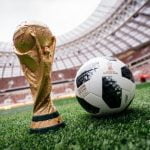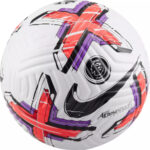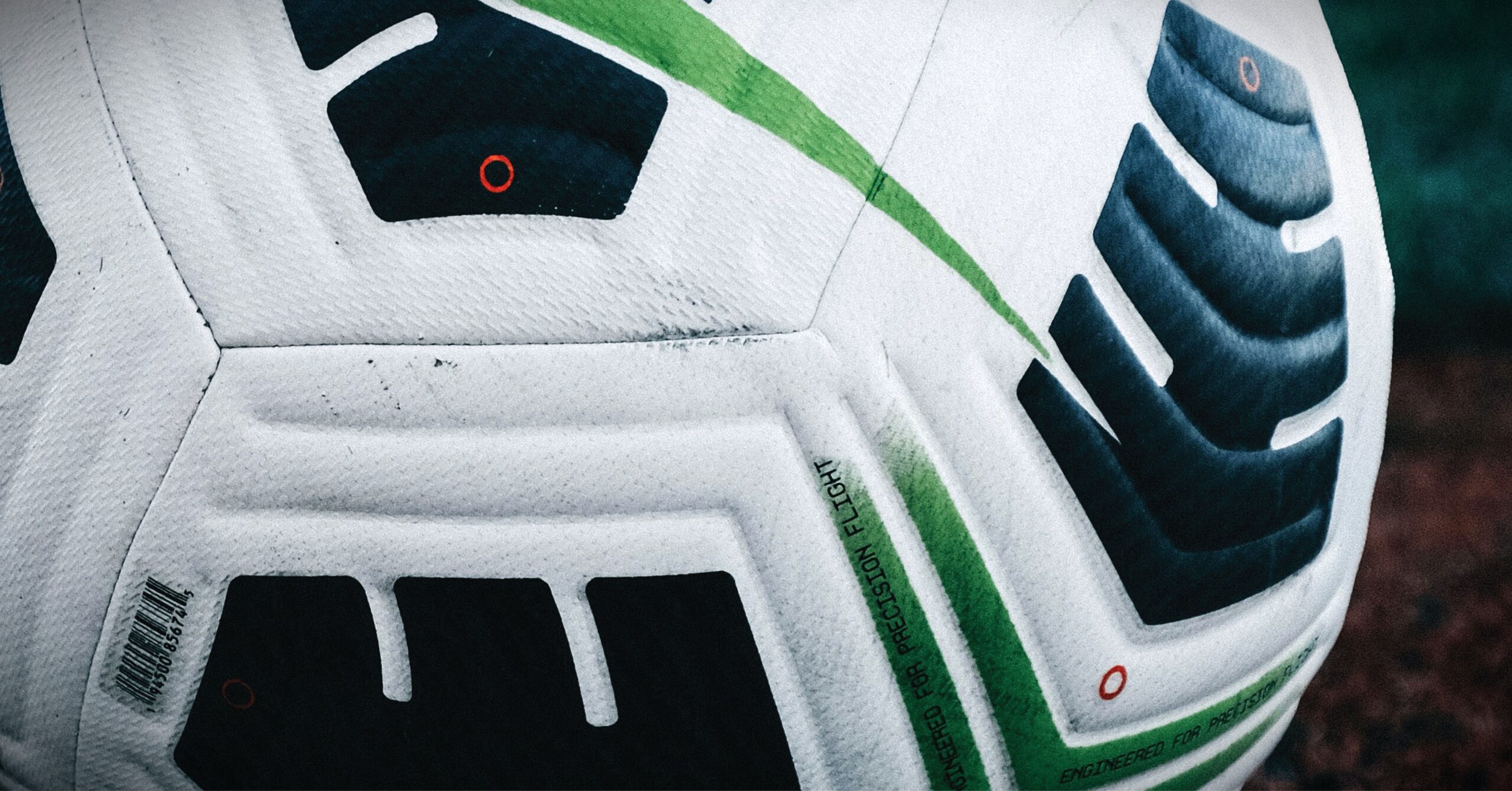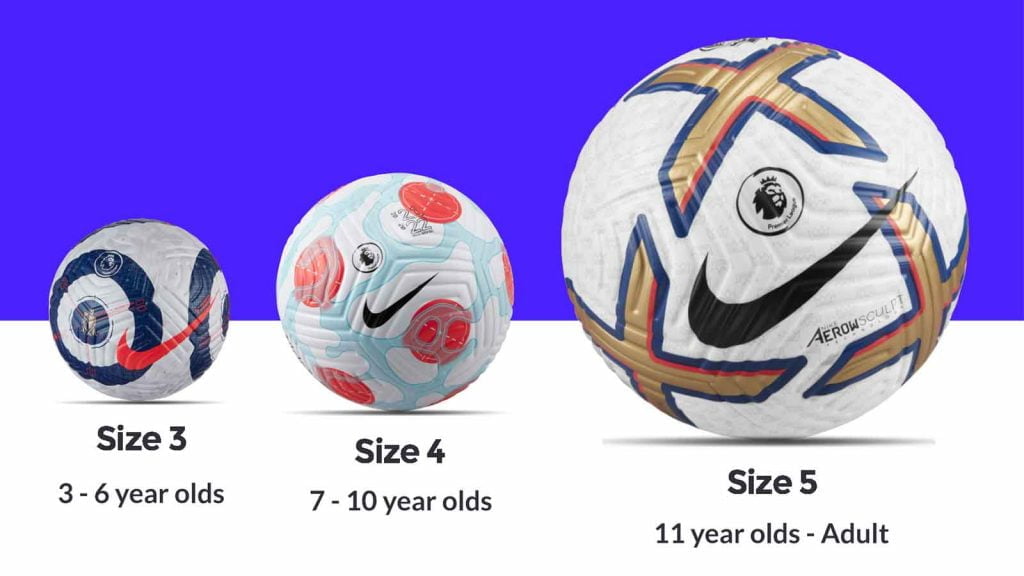One of the most beautiful things about
Did you know that the roots of the
Table of Contents
What to look for in a soccer ball?
Types of Balls
There are three main types of balls: training, match, and futsal. . Each type is tailored to meet specific needs, whether it’s honing your skills during training sessions, showcasing your talent in a competitive match, or mastering the finesse of futsal.
- Training balls are typically lower quality and don’t stand up to the rigors of competitive play.
- Match balls are designed to withstand the wear and tear of a whole season of matches.
- Futsal balls are smaller and heavier, making them perfect for indoor play.
We have the best training and match balls to play
Ball Sizes
When it comes to
Size 1 (Mini balls)
These miniature balls are perfect for young children learning the basics of the game. They’re also great for indoor play or practicing ball control skills in tight spaces.
Size 3
Ideal for players aged 8 and under, size 3 balls are slightly smaller and lighter, making them easier to control and maneuver for young players.
Size 4
Recommended for players aged 8 to 12, size 4 balls strike the perfect balance between weight and size. They’re suitable for both training sessions and matches, helping young players develop their skills.
Size 5
The standard size for adult and youth players aged 13 and above, size 5 balls are used in professional matches and competitive leagues worldwide. They offer optimal performance and durability for players of all skill levels.
What size ball do I need?
Here’s a handy infographic that helps you choose the right
Material
Another important consideration when choosing a football is the material it’s made from. They commonly come in two primary materials: latex and butyl rubber. While latex balls are often more budget-friendly, they tend to have a shorter lifespan compared to their butyl rubber counterparts. If you’re just starting out or prefer affordability, a latex ball may be the ideal choice. However, for those seeking durability and longevity, we recommend opting for a butyl rubber ball.
Weight
Another important factor to take into account is the weight of the
On the other hand, advanced players seeking to refine their game and build strength may benefit from using a heavier ball. The added weight provides increased resistance, helping to improve power and precision in passes and shots.
Construction
When it comes to construction, footballs generally fall into two categories: machine-stitched and hand-stitched. Machine-stitched balls are crafted using automated sewing machines to join the panels together. This method offers a faster and more cost-effective production process, although it may sacrifice some durability compared to hand-stitched alternatives.
On the other hand, hand-stitched balls are meticulously crafted by skilled artisans who sew the panels together by hand. While this method requires more time and effort, it results in superior durability and craftsmanship.
Choosing between machine-stitched and hand-stitched construction depends on your preferences and priorities. Whether you prioritize affordability or durability, selecting the right construction method ensures you’ll enjoy optimal performance and longevity from your ball.
Smart Balls and Latest trends
From embedded sensors tracking speed, spin, and accuracy to personalized custom designs, the integration of technology in
Are women’s soccer balls lighter than men’s?
Contrary to popular belief, women’s footballs are not inherently lighter than men’s. Both male and female players use size 5 balls, which are the standard for professional matches and competitive play. However, the weight of the ball can vary based on factors such as material, construction, and playing conditions.
We prefer a lighter ball at
Who makes the best soccer balls?
Adidas, Nike, Puma, Mizuno, Select, Umbro, Wilson, Mitre …the list goes on and on. Each brand has their expertise – while Adidas and Nike are known for their premium quality, brands like Select offer hand stitched balls, and others like Mitre provide value for money.
There are so many brands on the market that it can be tough to choose one—but don’t worry, we researched for you! Our favorites list is based on brand reputation, construction, availability, popularity, player level and real customer feedback.
Best Soccer Ball Brands
According to Verified Market Reports, Adidas, Nike, and Puma are top brands for
Adidas
Adidas has a wide variety of balls for every player, from the Starlancers to the UCL-branded match balls. They offer reliable options for all types of play, including indoor five-a-side games.
Nike
Are you looking for a reliable ball? Nike has a range for every need, with the Nike Premier League Merlin being the top choice. It’s durable and high-quality but comes at a premium price.
More Brands…
There are quite a few
- Nike
- Adidas
- Puma
- Molten
- Select
- Voit
- Mitre
- Wilson
- Champion Sports
- DSG Ocala
What soccer ball do most pros use?
Professional players use FIFA Quality Pro, FIFA Quality Inspected, or International Match Standard balls for competitive games.
adidas has been the official supplier of the footballs for the FIFA World Cup since 1970.
FIFA Quality Pro
FIFA Quality Pro balls are used in professional matches organized by FIFA.
These balls must meet specific criteria to be used in professional matches. For example, the ball must have a circumference between 27-28 inches and weigh between 420-445 grams.
FIFA Quality Inspected
FIFA Quality Inspected balls are also used in professional matches organized by FIFA.
However, these may not meet the same criteria as the FIFA Quality Pro balls. Primary performance and accuracy criteria are tested, but the main focus is ensuring extensive use.
International Match Standard
International Match Standard balls are suitable for International friendlies and Confederation matches. An inspected ball undergoes the same testing as an approved ball except for the shape & size retention test.
Watch and learn: Which pro football is best?
Here’s a great video that puts FIFA quality balls head to head to find out the best!
What is the best air pressure for a soccer ball?
The best air pressure for a
Different balls require different air pressure levels, so it’s essential to consult the manufacturer’s instructions before inflating your ball. Generally, softer balls need higher pressures, while harder balls need lower pressures.
It’s also important to regularly check the air pressure of your ball, as it will naturally lose some pressure over time. Checking the air pressure will help ensure you always play with a well-inflated ball.
Does a quality soccer ball matter?
Yes, a quality
Higher quality balls are made from more durable materials and have been constructed with greater precision. If a ball is too hard, soft, heavy, or light, it can hurt your game.
Quality balls provide greater control and accuracy when shooting, passing, and dribbling. They also last longer than lower-quality balls, meaning you won’t have to replace them as often. Investing in a quality ball is usually worth it!
How to clean a soccer ball
Clean your
Start using a soft brush and mild soap or detergent to remove dirt and debris from the ball’s surface.
Use warm water to make sure all of the soil is removed. Rinse off any soap residue with clean, cool water.
Dry off your ball with a soft cloth—avoid scrubbing, as this could damage the material.
Make sure you dry it thoroughly before storing or playing with it again!
These steps will help ensure your ball stays in good condition for longer!
Which Soccer Goals Would Pair Well with the Recommended Soccer Balls for 2024?
Which
FAQ
Who Makes The Best Soccer Balls?
There are several reputable brands that are known for making high-quality balls. Some of the top brands include Adidas, Nike, Puma, and Select.
What soccer balls do professionals use?
Professionals typically use soccer balls that meet the specifications set by FIFA. The most commonly used professional ball is the Adidas Telstar, which is the official match ball of major tournaments like the FIFA World Cup. Other popular options include the Nike Merlin and Puma One.
What is the best soccer ball in the world?
The best soccer ball according to professional players and experts, is the adidas Telstar 18.
What brand of ball does FIFA use?

FIFA uses the Adidas brand of ball.
What ball does Premier League use?

The Premier League uses a Nike Merlin football.
What is the latest trend in soccer balls?
Nowadays we have smart balls that are integrated with chips and sensors. The functionality of this tech range from goal line detection, to performance metrics like free kick curves.

